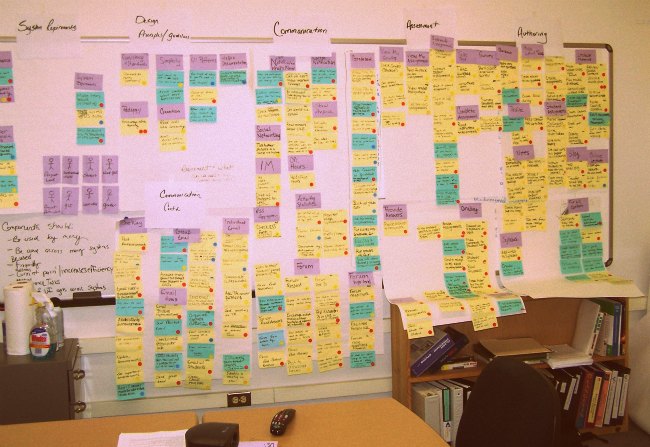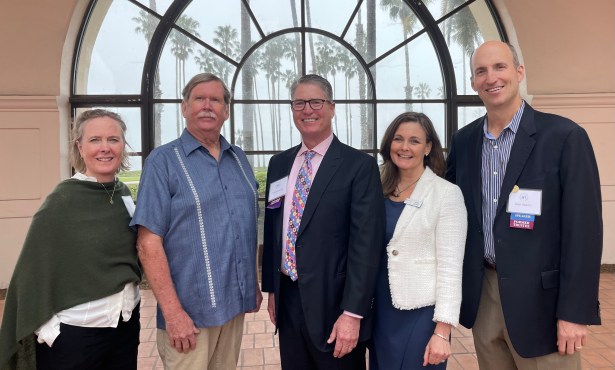An Affinity for Affinity Diagrams
How the Humble Post-It Note Got into the Crowd-Control Business
I’m developing an affinity for affinity diagrams.
In case you don’t know what an affinity diagram is—and there is no reason you should—it’s an exercise intended to get a bunch of diverse-minded people to discover their shared ideas. The process goes like this: you give your group a question (say, “What would it take to reduce traffic congestion on the 101?”), then ask each person to write their ideas down on Post-it notes or the equivalent thereof—one briefly worded idea per note. Then you slap them up on a wall. Once everyone’s notes are up, the group is supposed to move the notes around until they form clusters of common ideas. So, all the notes saying something like “increase public transit” or “more bus lines” go in one group, and all the notes about “more freeway lanes” and “widen the 101” in another, and “ride bikes to work” or “telecommuting” in a third. (Okay, this example is a bit more political than I’d intended … )

Anyway, when you’re done, you’ve grouped everyone’s ideas into affinity clusters, which then get labeled as such: there’s the “More Public Transit” cluster and the “More Freeway Capacity” cluster and so on. And thus you get those diverse individuals to discover their commonly shared ideas about solving the problem they’ve been posed.
My affinity for affinity diagrams has to do with their utility as a form of crowd control. A few weeks back I was at a meeting called by Santa Barbara County Animal Services to discuss the rather horrifying issue of the overcrowding of dogs at the Santa Barbara shelter. Conditions are pretty bad: there are 44 permanent kennels, but these days there are around 110 dogs living there. Talk about prison overcrowding … No one wants to euthanize, even though some dogs have lived there for two, even three years, and some are not very adoptable—overly stimulated pit bulls (you’d be highly excitable, too, if you’d been living in a cage for 2-plus years), grumpy little Chihuahuas (ditto), not the dogs of choice for South County’s pet adopting population.

Animal Services called the meeting looking for creative input into ways to change the status quo, so dogs aren’t being “warehoused” (i.e., holding unadoptable dogs rather than euthanizing them) in inhumane conditions. The idea was to brainstorm solutions.
Of course, a meeting like this is going to call out the cranks and the kooks, of which we have our share in animal rescue: people with grudges against Animal Services (hey, I’m not naming names), people who think that anyone not actually taking care of the dogs should be fired (um—so who would sell the dog licenses that generate the revenue that funds the salaries of the people who take care of the dogs?). And come they did, ready to grab the mike and harangue the crowd, anything but talk meaningfully about real world solutions to the problem.
The affinity diagram stopped ‘em dead. Instead of getting their two minutes of mike time, these folks had to offer suggestions, not criticisms. The result was a box load of ideas about getting more dogs adopted and into foster homes, increasing community involvement, and so on. At the end, the cranks and kooks weren’t any less cranky or kooky—but they also hadn’t succeeded in derailing the efforts of the other 70-plus people who were there to help the dogs.
So, maybe, instead of public comment at the beginning of each City Council or Board of Supervisors meeting, there should be a brief affinity diagram session. Imagine—all the weekly whiners, asked to make productive suggestions on behalf of our community. Of course, the budget for Post-it notes might go up, but it would be worth it for the increase in civility and sanity for the rest of us …



